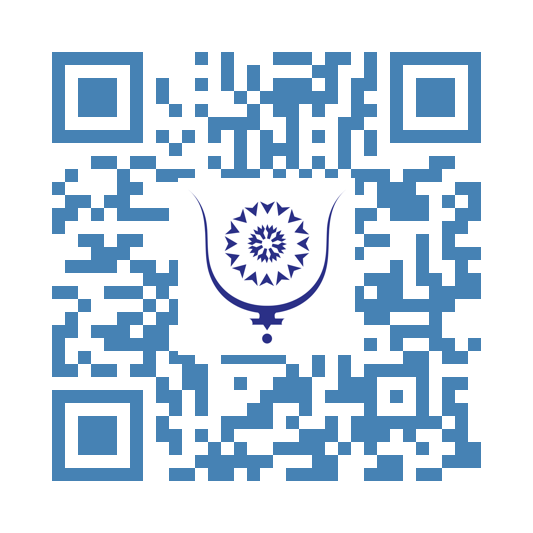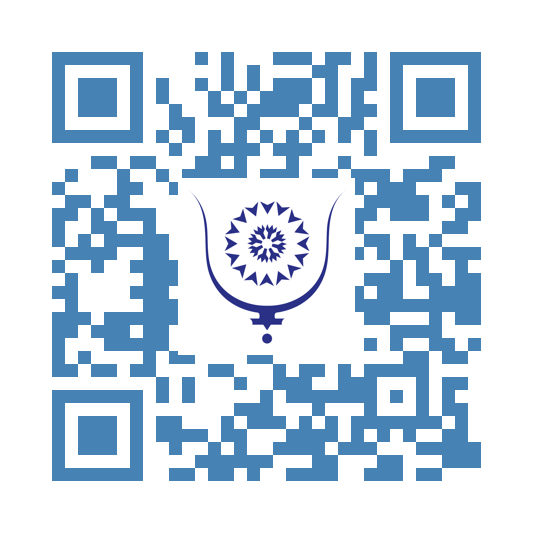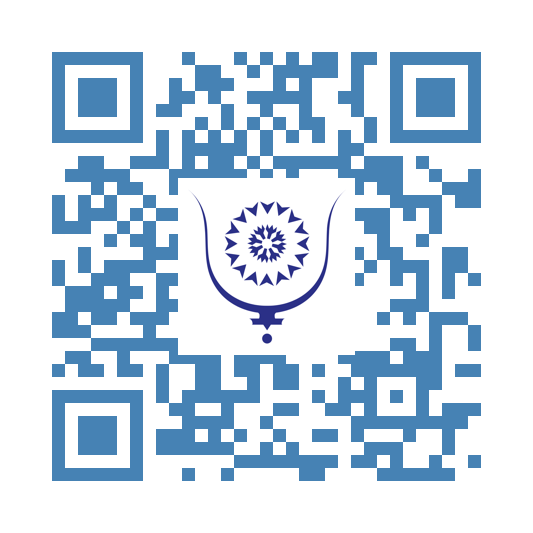Confiscated Freedoms: El Harrach and Tindouf, Two Faces of the Same Oppression...
10
It was while reading, moved, the heartbreaking letter from Algerian writer Boualem Sansal, addressed ultimately to everyone, that the idea for these few lines came to me. In this letter, written from El-Harrach prison, Sansal fiercely denounces the political repression and arbitrary incarceration imposed by the Algerian regime. This denunciation quickly made me think of the tragic situation of the population confined by the same regime for nearly fifty years in the Tindouf camps in Algeria.
My thoughts wandered randomly between the zealots who are there, like my high school friend Sadati, bearers of a chimera; those who stay there without even knowing why; those who have aged there; those buried there; and those born there. It is on these last that my thoughts particularly lingered.
The Tindouf camps shelter a few thousand young people born in exile, rather exposed where their parents ultimately did not choose to be, under extremely harsh conditions. For many, they are not even originally from the coveted lands nor bear any claim. They mainly depend on humanitarian aid, live in total precariousness, and see their well-being deteriorate, while those living just a few miles away enjoy abundance, comfort, and rights. They did not ask to be there and dream, like all their peers, of a better life, which truly exists on the other side.
Unlike a traditional prison with visible walls, like El Harrach, the Tindouf camps are an open-air prison, a constrained space where these youths are held without trial, without hope of freedom, nor any possibility of returning to their homeland—not by their own choice, but that of their jailers.
The common point between El Harrach and Tindouf: the sordid game of a military regime from another era.
This prolonged situation strikingly evokes the deprivation of freedom suffered by the detainees of Tindouf and the Algerian political prisoners Boualem Sansal describes in his letter. Both embody the same silenced voice, the same hope confiscated by the whims of officers who only carry the name, and by a military caporalism that, since 1962, continuously invents enemies, uses torture, repression, and deprivation of fundamental rights to maintain its grip on one of the richest countries in the world. This regime has stifled all democratic expression, from annulling election results to the spectacular assassination, broadcast live on television, of President Mohamed Boudiaf, sending a message of terror to the whole people. Recently, it brazenly repressed the peaceful Hirak protests and imprisoned their leaders. This regime no longer hesitates to mistreat even its most loyal servants. Randomly, prime ministers, ministers, high dignitaries, businessmen, generals, and journalists, even foreigners, find themselves subjected to quick trials where only the voice of their master resounds. They end up in the same prison, the famous El Harrach.
In his letter, Sansal expresses the physical and moral pain of a man imprisoned for having evoked history, dared to defend justice and dignity. His words carry the voice of all those whom the regime seeks to silence. This captive voice painfully echoes the fate of the youngsters held in Tindouf, also deprived of their most basic freedoms and condemned to endless waiting in a desert environment, hostile and hopeless.
Far from being a mere analogy, this comparison reveals a universal reality: whether behind bars or in the vast inhospitable desert, deprivation of freedom, forced exile, and broken hope remain the instruments of relentless political oppression. For these youths, the "march through an endless desert" is both a physical ordeal marked by extreme poverty, scorching heat, and isolation, and a metaphor for their quest for identity, dream of regaining their freedom, and joining the motherland.
Beyond denunciation, in his letter, Sansal makes a solemn appeal to France, asking it not to sacrifice its values on the altar of mercantile contingencies. The same appeal is addressed to the international community, on behalf of the young detainees of Tindouf, so that human rights principles are not sacrificed on the altar of geopolitical interests. This appeal is all the more relevant facing the situation of these youths, many of whom are not even originally from the Moroccan Sahara but are still imprisoned in a situation of exile and oblivion.
Thus, behind two different walls, a prison cell and undocumented, unrecognized refugee camps, lies the same tragedy: human beings reduced to waiting, to deprivation of liberty, and to a silent struggle not to disappear. This convergence highlights the urgency of strong humanitarian and political action to end these imprisonments so that freedom of thought, of living, and of deciding one’s own destiny is never again captured by an oppressive political machine, devised and implemented by an anachronistic military staff.
Thank you, sir, for awakening in me this fiber of compassion, even pity, for young people who deserve to live a better future.
I take here again Boualem Sansal’s words, which I address to the youth imprisoned in Tindouf:
*"Fear is a prison larger than the one where I find myself, and it is harder to break. But I know that one day, the wall will fall. Dictators always end up falling."*
Youth of Tindouf,
You will break the barbed wire, you will cross the checkpoints to return home by the strength of your character and the power of your will. Your country, that of your ancestors, the Kingdom of Morocco, awaits you; the future opens its arms to you; life will smile upon you for eternity, you will taste freedom there, the joy of living, of building yourself and of ensuring a happy future for your children. Your dreams will come true there and your ambitions will be realized. You will be the continuation of your ancestors in a diverse and powerful nation as it has been for centuries. You will help enrich humanity by your knowledge, your creativity, your genius.
You just have to dare.
Share:
Confiscated Freedoms: El Harrach and Tindouf, Two Faces of the Same Oppression...
copy:
https://bluwr.com/p/330307572
The Seven Chakras: A Metaphysical Anatomy of the Soul
762
Throughout the ages, esoteric traditions, yogic sciences, and mystical philosophies have described the human being as more than flesh and bone—as an energetic organism with subtle centers of power, perception, and spiritual potential. Among these systems, the doctrine of the seven chakras stands as one of the most refined and symbolically rich models of inner transformation. These chakras—meaning “wheels” in Sanskrit—are vortexes of energy located along the body axis, each responsible for specific aspects of consciousness, physiology, and spiritual evolution. From the densest energies of survival to the most ethereal states of divine union, the chakras form a ladder of ascent, guiding the soul towards enlightenment.
The Root Chakra (Muladhara), located at the base of the spine, is the foundation of the entire energetic system. It governs physical survival, grounding, and the instinct for self-preservation. Associated with the element earth, it links the individual to the material world and the ancestral lineage. When balanced, it grants stability, trust, and a strong connection to one's body and environment. When blocked or deficient, it manifests as fear, insecurity, or disconnection from the physical plane. Spiritually, Muladhara represents the coiled energy of potential—the kundalini—awaiting its ascent through the higher centers.
The Sacral Chakra (Svadhisthana), situated just below the navel, is linked to creativity, sexuality, and emotional fluidity. Associated with the element water, it reflects the soul's capacity to feel, to relate, and to generate life—physically, artistically, or spiritually. It is the seat of desire, pleasure, and procreation, and its energy is relational, connecting the self to others through intimacy and shared experience. When in harmony, it allows the free expression of emotion and creative force. When imbalanced, it may result in emotional instability, guilt, or addictive tendencies. Svadhisthana is where passion and refinement meet.
The Solar Plexus Chakra (Manipura) is the center of personal power, will, and self-definition. Aligned with the element fire, it is related to transformation, ambition, and the assertion of the individual will. It is through Manipura that one develops a clear sense of identity and the strength to act upon purpose. When balanced, this chakra radiates confidence, motivation, and integrity. An excess may produce domination or pride, while deficiency results in passivity or low self-worth. Spiritually, Manipura is the alchemical forge where ego begins to be disciplined and transmuted into conscious intention.
The Heart Chakra (Anahata) is the gateway between the lower and upper chakras, and the center of unconditional love, compassion, and spiritual empathy. Associated with the element air, it expands the sense of self to include others, fostering connection, forgiveness, and inner peace. An open Anahata transcends personal desire and embraces unity, allowing one to love without attachment and to serve without self-interest. Imbalances may manifest as emotional coldness, grief, or over-dependence. Spiritually, this chakra is the sacred rose of divine love, unfolding toward the eternal.
The Throat Chakra (Vishuddha) governs expression, communication, and the power of the word. Linked to the element ether (or sound), it represents the capacity to speak truth and to manifest thought into form through language. It is also the seat of inner listening and alignment between inner truth and outer expression. When open and balanced, Vishuddha enables authentic speech and artistic expression. When blocked, it may result in silence, dishonesty, or miscommunication. At the spiritual level, it is through this center that the magician, mystic, or initiate learns to wield the sacred word—the logos—as an instrument of transformation.
The Third Eye Chakra (Ajna), positioned between the eyebrows, is the seat of inner vision, intuition, and higher perception. It transcends rational analysis and opens the gates to symbolic insight, dreams, and clairvoyant awareness. Associated with the light element or pure mind, it integrates the polarities of logic and imagination, allowing one to perceive patterns, archetypes, and spiritual truths. A balanced Ajna chakra produces clarity, insight, and an awakened inner compass. Imbalance may cause delusion, fantasy, or disconnection from reality. Mystically, Ajna is the eye of the soul, through which one perceives the invisible architecture of the cosmos.
The Crown Chakra (Sahasrara), located at the top of the head, is the highest center of consciousness, representing union with the Divine, cosmic intelligence, and spiritual liberation. Unlike the other chakras, Sahasrara is not governed by an element but by pure consciousness—chit—itself. It is symbolized by a thousand-petaled lotus, forever unfolding into infinity. When this chakra is fully awakened, the individual transcends ego and merges with universal will, experiencing profound bliss, silence, and liberation. Imbalances may manifest as spiritual disconnection, nihilism, or excessive intellectualism. At its highest vibration, Sahasrara is not a center of power but a doorway to the return to the Source.
Together, the seven chakras form a living mandala of human potential. They are not merely energetic centers but evolutionary thresholds, each inviting the soul to purify, awaken, and integrate aspects of the self on its path toward unity with the divine. When harmonized, these chakras become a ladder of light—a sacred ascent from survival to transcendence, from matter to spirit. The awakening of the chakras is thus not an end in itself, but a means of returning to wholeness, where the human becomes a conscious expression of the infinite.
Share:
The Seven Chakras: A Metaphysical Anatomy of the Soul
copy:
https://bluwr.com/p/323058346
Genesis...
3303
I greatly enjoy looking out windows, any windows. Windows have always offered me a picture of life. A picture that constantly changes, a picture that I alone see before it disappears forever. Maybe that is where my taste for the ephemeral comes from. It is my only certainty.
What I am also sure of is that it comes from the fact that as a baby and young child, my mother would place me by the window where I would hold onto a grille. An opportunity to be both inside and outside at the same time and to let her go about her many responsibilities as a housewife. It was a traditional Moroccan grille, typical of ours. Today, I have reused that same grille design on the windows and balconies of my house.
I have in fact remained my mother’s eternal child, no doubt like we all remain so, but probably differently, otherwise, uniquely.
The window is an escape from the cramped space of the house. In fact, all houses are cramped. The house, paradoxically despite its smallness, is a space of freedom, intimacy, and security. It is also a space that distances the horizon and makes it sublime. The window allowed me to raise my head and look far. As far as this window allowed me to see.
The house cultivates the dream; the window waters it.
On the evening my mother passed away, I stood by the window. It seemed to me I heard her voice again speaking from afar to reassure me. My mother loved me very much. She did not say it, but made me feel it through the tone of her voice, her gaze, and a slight smile at the corner of her lips. A smile she had a special secret to. My mother’s smile was genetic. I clearly saw she inherited it from my grandmother—Cherifa Lalla Zhour had the same smile.
My mother was not expansive.
She extended her love to my children later, and I felt it. I was her eldest, her first female experience, her first pains, her first childbirth, the first baby cry to her ears.
I owe my mother much: the sensation of a pencil in hand, the touch of the softness of paper before writing on it, the taste for reading and the pleasure of manual work.
My mother was among the first classes of the modern school in Fès. My maternal grandfather, Si Ahmed Ben Ali, had the wisdom to send her to school against the opinion of people at the time—family, neighbors, and onlookers. She traveled a long distance from Saqaet El Abbassyine to her school. It was in Fès j’did, a neighborhood of great nationalists, intellectuals, artists, and state clerks: Bahnini, Benbouchta, Moulay Ahmed El Alaoui, Ahmed Chajai, and many others. It is the stronghold of Wydad of Fès.
I have many wonderful memories of Saqaet El Abbassyine. From time to time, I go for a walk there to recharge myself. The dilapidation of Bab Riafa, the sad passage by Lalla Ghriba to reach Saqaet El Abbassyine, the continuation by Sidi Hmama to arrive at Qobt Assouk, saddens me every time. So, to soothe my pain and sorrow, I go and sit at Bab Boujloud to enjoy a good glass of tea prepared in a traditional samovar, under the famous mulberry tree.
The magic of Fès is unmatched.
My father, on the other hand, was affection in the absolute. The exemplary man. The man who forged my pride and committed my life to serving the country. Moroccan at heart, attached to the land of his ancestors. Proud to have been an active nationalist against the protectorate. He spoke of his people’s struggle against French soldiers. He kept fresh memories of the fights of Bou Gafer and the brave battle of his people. He was happy to have served his country but also disappointed with the evolution of some things. He said that we were losing our soul with the decline of our attachment to ancestral values; remembered by all the families of old Rabat who still recall him for having treated their children and eased their pains. He passed away certain that Morocco could have done better.
He remained attached to his parents and adored them, attached to his native land that he visited every year, attached to his people to whom he offered land to expand the Sidi Daoud cemetery, his forever village, today swallowed by a soulless Ouarzazate. I am not surprised. My father is a direct descendant of Sidi Daoud, a Sufi Sheikh and great scholar who left many works including the famous *Oumahat Al Wataeq, Al Mountafaa Bih Fi Anawazil*.
My father loved Rabat and its beach. It was there he saw the sea for the first time in his life, coming from the other side of the Great Atlas, which climate change is now altering.
It was at the Rabat beach that he learned to swim.
Today, his grave overlooks that beautiful beach and ocean. His resting place is bathed in the sea air that blows continuously over the hilltop, the final abode of thousands of souls at rest, of lives both rich and less rich, and of memories forever lost. The cemetery tells a lot about the place we give to our dead, and it does not speak well of us.
So, like my brothers and sisters—Jalil, Moughni, Rajae, Atika, Abdelmoutaleb, Elhoussein, Soumaya, I am a kind of accident of nature. A father from Ouarzazate marrying a girl from Fès; that was rare. It was 1950.
The maternity hospital where my lungs filled for the first time with air and where I cried out announcing my coming to life is still there. It was Tuesday, 11:37 am, May 15, 1951. Each time I pass by, something brings me back to memories I have created from my mother's stories. I see again her pride and my father's joy at my birth.
By chance, on the way to bury my mother, and years later my father, we passed along the Almohad wall. The historic maternity hospital of Rabat is just behind. The circle was thus completed.
My mother's name was Lalla Amina Makhloufi and my father’s Ahmed Belhoucine El Ouarzazi. The civil registry attendant gave him the surname Daouda, probably because he was born in Sidi Daoud or simply because that person had been influenced by a stay in sub-Saharan Africa...
Share:
Genesis...
copy:
https://bluwr.com/p/318522084





